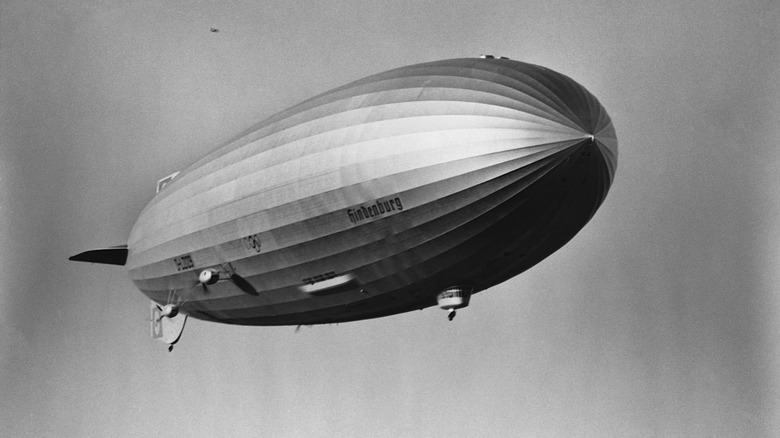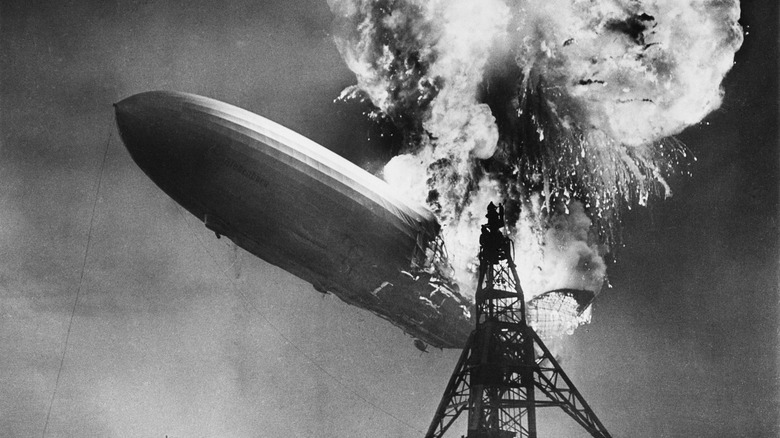How Long Did It Take The Hindenburg To Cross The Atlantic?
The Hindenburg airship is most closely associated with the disaster that took place on May 6, 1937, but before tragedy struck, it spent a short but notable life in service, transporting passengers between continental Europe and America. It featured 25 cabins, each fit for two passengers. It could also carry additional passengers and crew, ferrying them across the Atlantic faster than any ocean liner of the era. According to a passenger account published by Smithsonian Magazine, that journey took around 60 hours.
The Hindenburg began its journey in Frankfurt, Germany, before heading across northern Europe and the Atlantic, skirting near Greenland and Newfoundland. From there, it followed the eastern North American coast before landing at the Lakehurst airfield in New Jersey. After arrival, passengers could travel north to New York City.
Although the Hindenburg had popularized airship travel, it wasn't the first aircraft of its kind. The original Zeppelin, the LZ-1, took its maiden flight in 1900, and by 1931, the Graf Zeppelin offered commercial flights between Europe and South America. However, the Hindenburg's scale was unprecedented for any aircraft; for comparison, it was around three times as long as the modern "Queen of the Skies," the Boeing 747.
What happened to the Hindenburg?
The Hindenburg's flights were relatively infrequent, with the airship completing just 17 transatlantic return flights during its first year of service, with 10 of those destined for the U.S. The airship had been launched in March 1936, and so was only just over a year old when it caught fire while it was trying to land in New Jersey.
Despite some speculation that the Hindenburg fire might have been some kind of indirect attack against Germany, both German and American investigators concluded at the time that the fatal fire was caused by a leak in one of the airship's gas cells. The Hindenburg was originally designed to float using helium gas, but due to trade restrictions, its operators instead used highly flammable hydrogen gas in the cells. When this gas began to escape during the landing, it somehow came into contact with an ignition source, causing the fire that rapidly spread throughout the ship. In total, 36 people died during the crash, including 22 crewmembers, 13 passengers, and one ground worker.
In the years following the disaster, airships quickly fell out of favor with travellers, although smaller blimps continued to be employed for military uses by the U.S. Navy. Blimps are sometimes used today for advertising purposes, with Goodyear famously employing a fleet of four blimps that travel across the U.S. and Europe.

